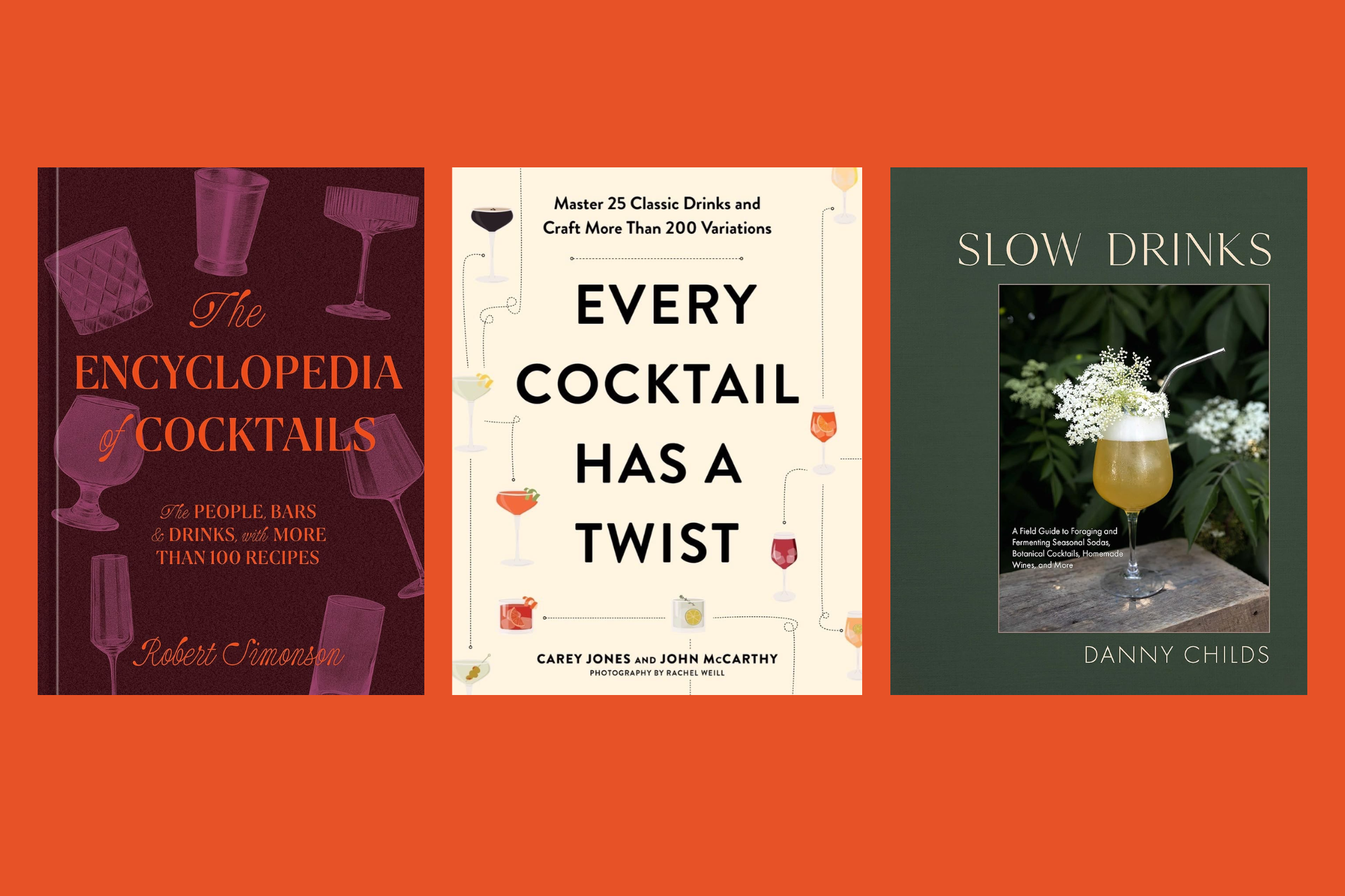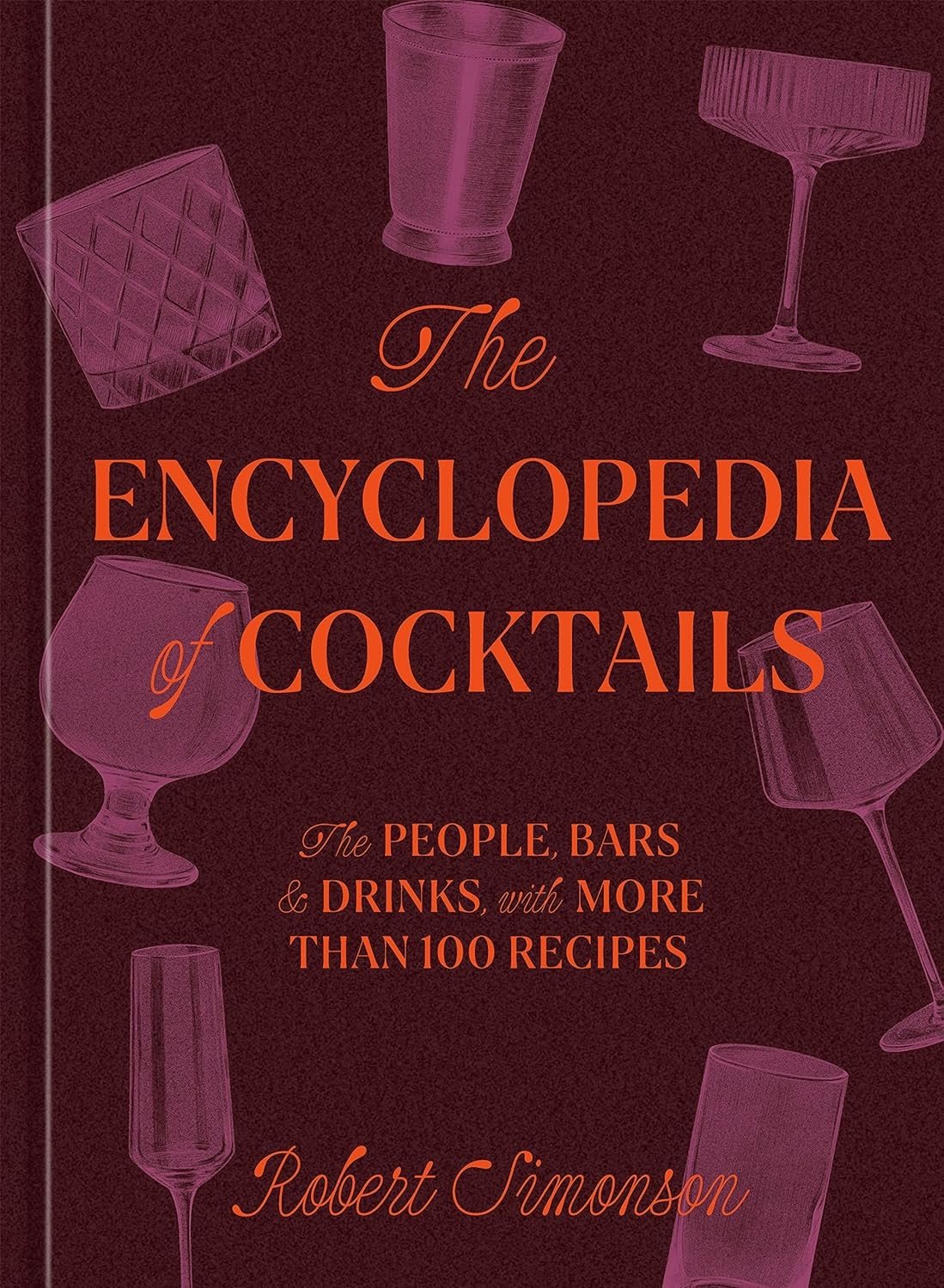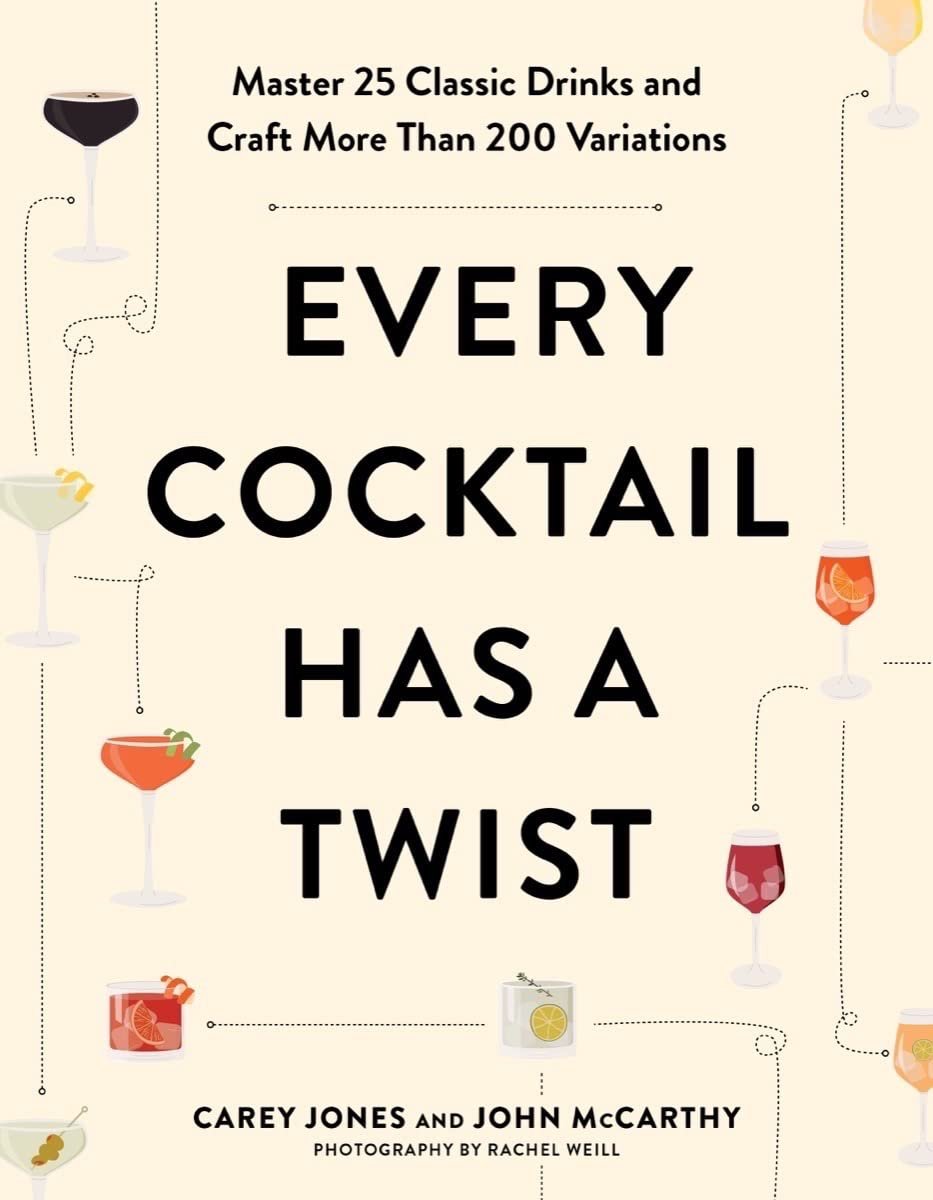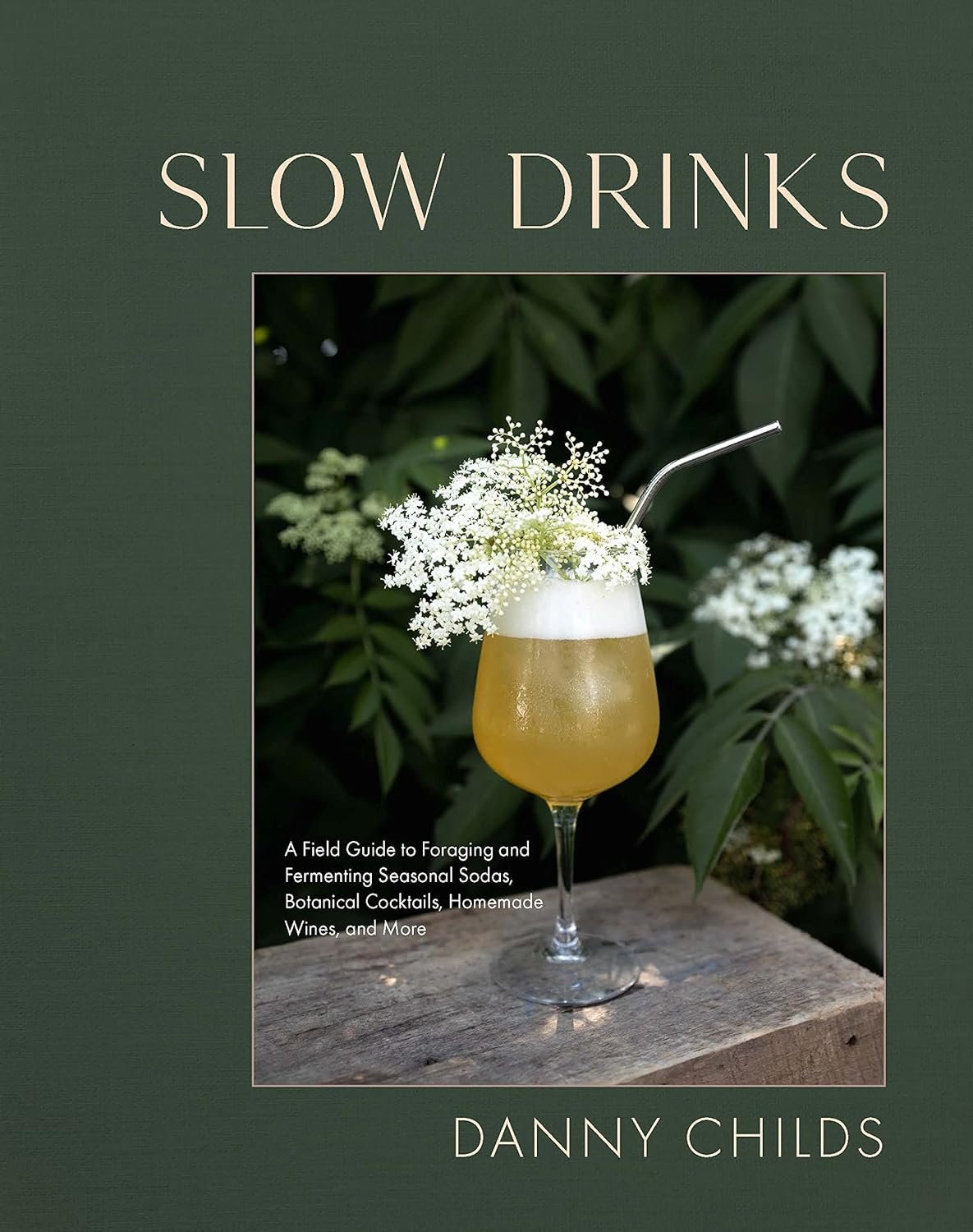Boozy Book Reviews: Three New Cocktail Books (2023)
Cocktail books
This year we’ve reviewed a lot of drinks books. Some books we’ve reviewed this year includes Bourbon 101, The Maison Premiere Almanac, Tropical Standard, Agave Spirits, Signature Cocktails, Holy Waters, The Anchor Brewing Story and many more. Since more cocktail and drink books come out each season than we can possibly cover, we’ve chosen a few of our favorites for this winter and holiday gifting season.
The Encyclopedia of Cocktails : The People, Bars & Drinks, with More Than 100 Recipes by Robert Simonson
(Ten Speed Press, October 17, 2023)
The Encyclopedia of Cocktails
New York Times writer Robert Simonson is known for accurate, factual, and even-keeled drink reporting in his coverage of bars, bartenders, and cocktails, and in this his sixth drink book he mixes in a bit of judgement along with the dates and names. Previous works have covered the detailed histories of the Old Fashioned and the Martini, and the history of the modern craft cocktail renaissance, but in The Encyclopedia of Cocktails most entries are short, written like a quick story, and they can often induce a chuckle. It’s an encyclopedia with opinions. For the entry on the Bronx cocktail, for example, Simonson writes, “The cocktail renaissance lifted not a finger to save it. It is held in near universal disdain by modern bartenders, who regard it as weak and flabby and believe there is no method within their talents to make the drink palatable.”
That is one point of departure from the Oxford Companion to Spirits and Cocktails, which is 500 pages longer than this work but an obvious choice of comparison. Another, as Simonson notes in the introduction, is that the focus is solely on cocktails. He writes, “Every entry, be it of a spirit or a particular historical bar or a notable person or a professional tool, is written with a view of how that spirit, bar, person, or tool played a role in the history, progress and proliferation of cocktails and cocktail culture. So, the entry on rye whiskey, for instance, does not dwell overly long on how rye is made or who makes it… but rather how it is used in cocktails, and how that use has changed over time.”
Most entries seem to highlight either the early golden era of the cocktail from the late 1800s to Prohibition, or the modern golden era, which makes sense given the several decades of mixology dead space between the two. The entries are not super obscure topics (at least not to those of us who know a rough definition of the boomerang, bartender’s choice, and the startender) but important stops along cocktail history. I particularly enjoyed reading entries about people and places - how many influential bartenders worked at a particular venue or what was a particular bar’s lasting impact. For something that’s called an encyclopedia it is an enjoyable read in alphabetical order from the bar Absinthe to the recipe for the Zombie.
Every Cocktail Has a Twist: Master 25 Classic Drinks and Craft More Than 200 Variations by Carey Jones and John McCarthy
(Countryman Press, Nov 7, 2023)
Every Cocktail Has a Twist
There have been several other “classics and twists” books written but this one contains many more of each than all the rest. In fact, if you jumbled all the recipes into random order you might not even notice the theme – it would just be a book of good drinks. Interestingly, some the classics here may are twists on each other: For example the Daiquiri and the Gimlet are essentially the same drink with gin in the latter swapped for rum in the former, but here these two drinks are given their own entries (as is the Mojito – a Daiquiri with soda water and mint).
The variations on the classics aren’t swapping out the base spirit for another one in most cases – the Daiquiri variations all include rum and most of the Gimlets gin – but the authors more often swap out the accent flavors and rebalance cocktails from there. Sometimes the rebalancing requires the addition or subtraction of some sweetener or a new garnish, and the drink doesn’t much resemble the original, but that’s the point of this style of organization: in the variations you can see the structure of the classics and intent of the twists and how it went from one to the other. Without using too much explanation the recipes themselves teach the home bartender about flavor and balance.
Most classics lead to five or so variations, but some drinks like the Margarita in Martini have a dozen or more. The Negroni probably has some of the most familiar variations but other twists in the book are quite original. For example, the French 75 section includes the original with gin and a well-known cognac variation, then spa-like cucumber and mint versions, a fruity blood orange version, a floral sparkling rosé and rosewater variant, a nearly unrecognizable (except it’s in the same section) tropical rum and guava version, plus two more. But they all include sparkling wine, a touch of citrus, and a sweetener. It’s impressive just how much mileage the authors are able to get out of each drink.
Slow Drinks: A Field Guide to Foraging and Fermenting Seasonal Sodas, Botanical Cocktails, Homemade Wines, and More by Danny Childs
(Hardie Grant, October 3, 2023)
Slow Drinks
This book touches on several simultaneously trending topics: foraging, home fermentation, and attention to amaros. Ethnobotanist Danny Childs first introduces readers to the techniques in the book (fermentation, beer and wine- making, vinegars and shrubs, pickling and lacto-fermentation, kombucha, infusions and tinctures, bitters and amari, and preserves including jam and sherbet). Then he takes us season by season through botanicals ready for harvest and drink ingredients that use each one.
For example, tomatoes are described then recipes provided for fermented tomato water, tomato leaf oil, tomato leaf oil-washed vodka, and then a cocktail recipe for the Nightshade Martini finishes the section. Other botanicals include elderflowers, paw paws, rhubarb, chicory, and figs, so there are a mix of readily- findable ingredients with some regional available ones. Many of the plants can be dangerous at high levels or in certain conditions, and thankfully we are given information on foraging and safety. (I wouldn’t necessarily trust most cocktail book writers to be accurate with this stuff, but Childs really seems to know his stuff.)
Many of the most tempting recipes to me are quite ambitious- the Fall “Genepi” Amaro includes apples, cranberries, sumac berries, rosemary, sage, wormwood, fig leaves, orange, juniper berries, toasted pumpkin seeds, maple syrup, plus applejack. I know that I won’t recreate several of them exactly as described, but I plan to the book as a source of inspiration to make simpler versions from ingredients I can “forage” from the city grocery store.




